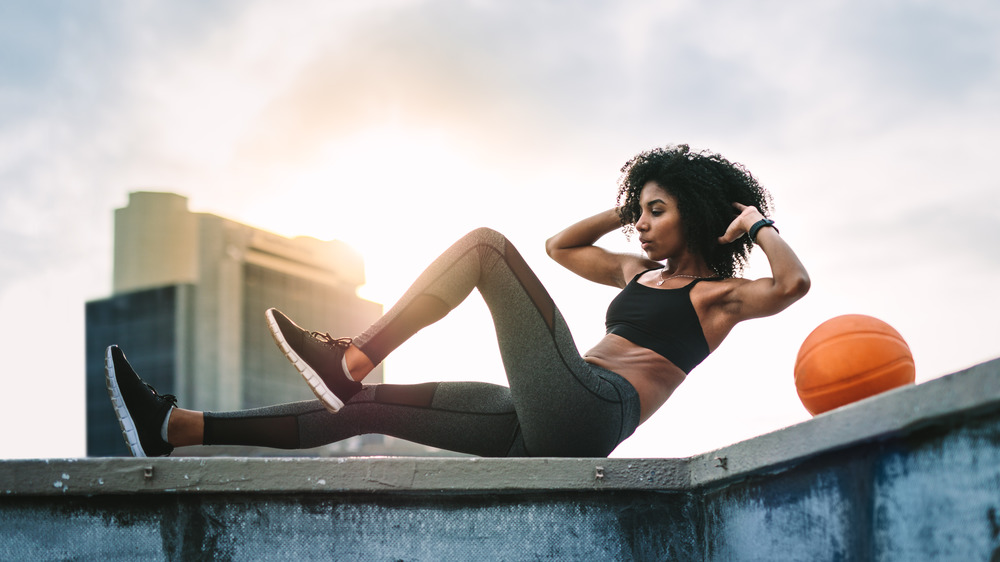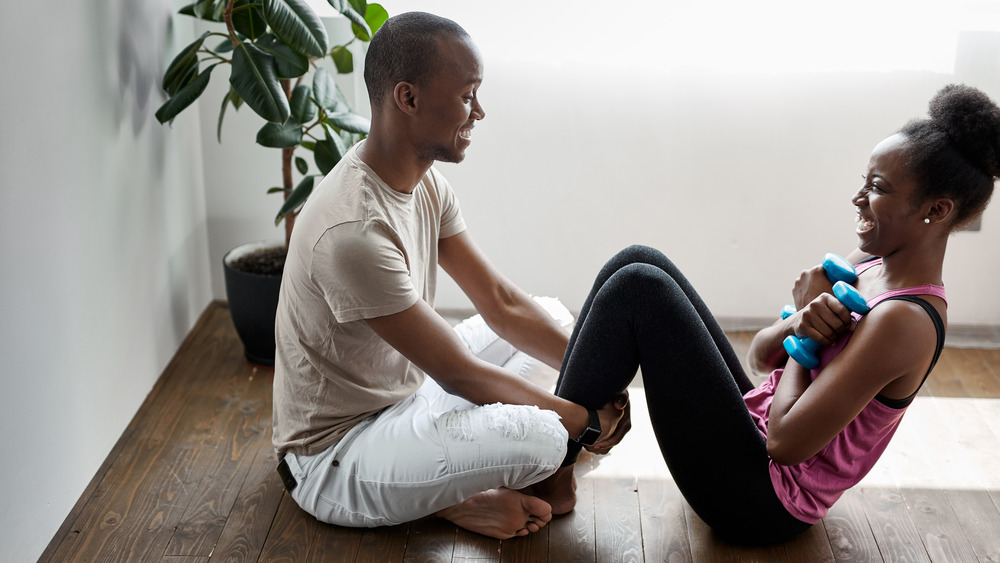Sit-Ups Vs Crunches: What's The Difference?
Both sit-ups and crunches work your abs, but they are different exercises. With crunches, your lower back never leaves the floor, but with sit-ups, it does. Crunches work your upper abs, while sit-ups work your six-pack abs, deep core muscles, obliques, hip flexors, and lower back muscles. Sit-ups work way more muscles than crunches do, but which one you should be doing depends on which muscle groups you are targeting. If you want to target the upper abs and work those, crunches are your thing. If you want to work several muscle groups and get more out of the exercise, then sit-ups are for you (via Women's Health).
There are more pros and cons of sit-ups vs. crunches. With sit-ups, the clear pro is that you're working several muscle groups. Lifting your entire torso off the floor works your stabilizing muscles, giving you better balance and posture. The downside is that there's a risk for injury. If you don't use proper form, especially if you're rounding your back, you're putting stress on your spine.
The pro to crunches is that they are really easy to do, but the downside is that you're only working your upper abs. Also, if you're not using proper form when doing crunches, you can strain your neck. Practice proper form when doing any exercise to reduce your risk of injury significantly.
How to do crunches and sit-ups
Do a proper crunch by tucking your chin and lightly touching your forehead or putting your fingertips behind your ears. Lie on your back on your mat and bend your knees. Keep feet flat on the floor. Lift your upper back off the mat while engaging your abs. Keep your upper body in a straight line from head to hips. Lower back to the floor, and that's one crunch. Inhale before the crunch, exhale as you rise, and inhale again on the way down. Repeat 10 times and add more if you can.
Do a proper sit-up by starting in the same position. Lie on your back with knees bent and feet flat on the floor. Place your fingers lightly on your forehead or behind your ears. Engage your abs and lift your entire torso off the floor, keeping your upper body straight. Bring your chest as close to your thighs as possible. Inhale before, exhale as you come up, and inhale on the way down. Repeat 10 times and add more if you can. It may be easier if you can anchor your feet. Having a partner to hold your feet to the floor while you do sit-ups can help tremendously.
The pros for both sit-ups and crunches are that you can try some variations of the exercises to make them more difficult. After you learn proper form, try bicycle crunches, reverse crunches, side crunches, and oblique crunches (via Muscle & Fitness). Some sit-up variations to try are Russian twists, v-ups, and alternating toe touches (via Fitness Republic).


